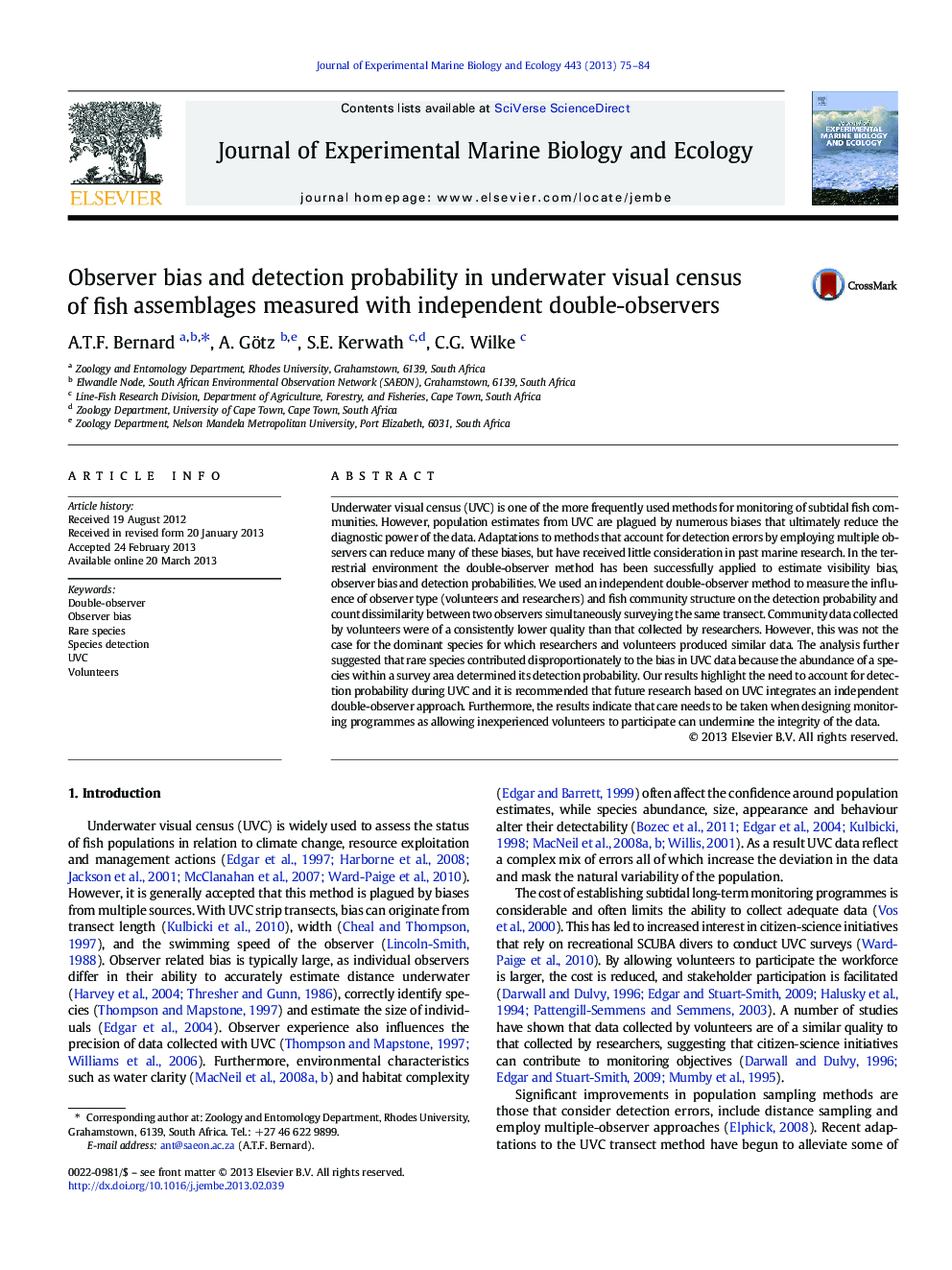| Article ID | Journal | Published Year | Pages | File Type |
|---|---|---|---|---|
| 4395775 | Journal of Experimental Marine Biology and Ecology | 2013 | 10 Pages |
•Fish community data from volunteers was of a lower quality compared to researchers.•Abundance of a species along a transect determined its detection probability.•Results highlight the need to account for detection probability during UVC.•Recommended that future research using UVC incorporate a double-observer approach
Underwater visual census (UVC) is one of the more frequently used methods for monitoring of subtidal fish communities. However, population estimates from UVC are plagued by numerous biases that ultimately reduce the diagnostic power of the data. Adaptations to methods that account for detection errors by employing multiple observers can reduce many of these biases, but have received little consideration in past marine research. In the terrestrial environment the double-observer method has been successfully applied to estimate visibility bias, observer bias and detection probabilities. We used an independent double-observer method to measure the influence of observer type (volunteers and researchers) and fish community structure on the detection probability and count dissimilarity between two observers simultaneously surveying the same transect. Community data collected by volunteers were of a consistently lower quality than that collected by researchers. However, this was not the case for the dominant species for which researchers and volunteers produced similar data. The analysis further suggested that rare species contributed disproportionately to the bias in UVC data because the abundance of a species within a survey area determined its detection probability. Our results highlight the need to account for detection probability during UVC and it is recommended that future research based on UVC integrates an independent double-observer approach. Furthermore, the results indicate that care needs to be taken when designing monitoring programmes as allowing inexperienced volunteers to participate can undermine the integrity of the data.
